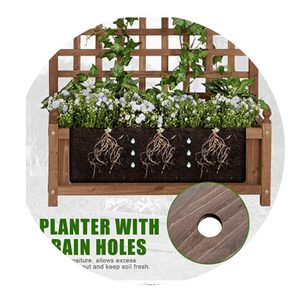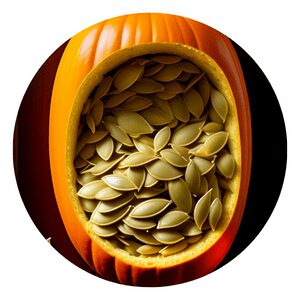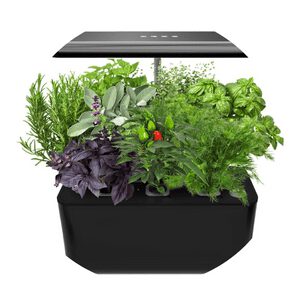How to grow Beans Hydroponically
Growing your own produce can be a rewarding and enjoyable experience.
Hydroponic green bean gardening is a great way to get started with hydroponic growing because it’s relatively easy and quick to grow.
This article will provide you with a step-by-step guide for growing green beans in a hydroponic setting, from selecting the seeds and setting up the system to harvesting the fruits of your labor.
Hydroponic Beans Menu
Benefits of growing green beans hydroponically
One of the biggest benefits of growing green beans hydroponically is its increased efficiency in nutrient and water uptake.
Hydroponic systems allow plants to absorb nutrients more efficiently, decreasing the amount of fertilizer needed and ultimately reducing waste.
Additionally, since hydroponic systems use less water than traditional soil-based gardening methods, it helps conserve water resources.
Another benefit of growing green beans hydroponically is its ability to control pests and diseases.
Unlike soil-based gardening where pests can easily infest crops, hydroponic systems are less prone to pest infestations.
This means that growers can reduce or even eliminate the need for pesticides and herbicides, making it a healthier option for both consumers and the environment.
Lastly, hydroponic green bean gardening allows year-round cultivation by providing a controlled environment suitable for plant growth.
This means that growers can harvest fresh green beans all year round regardless of seasonal changes or weather conditions.
It also provides an opportunity to grow exotic varieties not usually found in traditional agricultural settings due to their inability to thrive in certain climates.
Preparing for Hydroponic Green Bean Cultivation
One of the first things to consider when preparing for hydroponic green bean cultivation is the type of system to use.
There are various types of hydroponic systems, such as deep water culture, nutrient film technique, and drip irrigation.
Each system has its benefits and drawbacks, so it’s essential to choose one that suits your needs and preferences.
Next, you’ll need to select the appropriate growing medium. Some popular options include rockwool cubes, coconut coir, perlite, or vermiculite.
You’ll also need a reliable source of nutrients for your plants since they won’t be getting them from soil.
Hydroponic nutrient solution contains all the necessary minerals that green beans (and other plants) require for healthy growth.
Lastly, you’ll need to provide optimal environmental conditions for your plants’ growth.
This includes maintaining adequate temperature (around 75°F), humidity (between 40-60%), light intensity (12-16 hours per day), and ventilation.
With proper preparation and care throughout the growing process, you can expect a bountiful harvest of delicious green beans in no time!
Choosing the right variety of green beans
Firstly, when it comes to choosing the right variety of green beans for hydroponic gardening, the bush bean is a great option.
Bush beans are known for their compact growth habit and do not require a trellis or support system.
This makes them ideal for smaller hydroponic systems where space is limited.
Some popular varieties of bush beans include Blue Lake and Contender.
Secondly, if you have more space in your hydroponic garden and are looking for a climbing bean variety, consider pole beans.
Pole beans grow upwards on trellises or supports which allows for better use of vertical space in your hydroponic setup.
Some popular varieties of pole beans include Kentucky Wonder and Scarlet Runner.
Lastly, it’s important to choose green bean varieties that are disease-resistant since they will be grown in a closed environment with no natural predators to keep pests at bay.
Disease-resistant varieties such as Provider and Strike can help ensure a successful harvest without the need for harmful pesticides or insecticides.
Step one, pick the beans you'd like to grow, It's time to put your hydroponic garden show. Gather the tools that you need for this job and get ready for fun Plant your seeds in nutrient-rich peat moss mixed with compost when done. Connect pumps, sensors and a timer attached from an external power source Expect weekly sprouts as you increase light exposure of course Be sure not to drown the bean plants, as this won't do them any favors In time there'll be hearty green beans on their trellis hung like paper!
Chappy The Gardener
Setting up a hydroponic system for green beans
When setting up a hydroponic system for green beans, it is important to choose the right container.
One option is a deep-water culture system where plants grow in net pots that sit on top of a tub filled with nutrient-rich water.
Another popular method is an ebb and flow system where plants sit in trays and are periodically flooded with nutrient solution.
It’s important to keep pH levels between 5.5 and 6.0 for green bean growth.
The next step involves choosing the right nutrients for your hydroponic system.
Nitrogen, potassium, and phosphorus are essential macronutrients needed for plant growth, while calcium and magnesium are secondary macronutrients that also play a role in healthy plant development.
A good fertilizer should contain all of these elements in the correct proportions.
After setting up your hydroponic system and adding nutrients, it’s time to plant the green bean seeds or seedlings.
Make sure they have enough space to grow by spacing them at least six inches apart from each other.
Finally, monitor your hydroponic system regularly to ensure optimal growing conditions for your green beans such as proper lighting, temperature control, consistent watering schedule, and regular pruning to promote bushier growth patterns that yield more produce per plant over time!
Selecting the right nutrients for hydroponic green bean cultivation
When it comes to hydroponic green bean cultivation, selecting the right nutrients is crucial to ensure healthy plant growth and a bountiful harvest.
The three primary macronutrients that plants need are nitrogen (N), phosphorus (P), and potassium (K).
Nitrogen is essential for leafy growth, while phosphorus promotes root development and flower/fruit production.
Potassium helps with overall plant health and disease resistance.
In addition to these macronutrients, hydroponic green bean growers may also need to provide their plants with micronutrients such as iron, magnesium, calcium, and zinc.
These elements are required in smaller quantities but are equally vital for proper plant development.
It’s important to note that different stages of plant growth require varying nutrient ratios.
For instance, during the vegetative stage when the plant is producing leaves and stems, a higher concentration of nitrogen is necessary.
During the flowering stage when beans start forming on the vines, more phosphorus should be given.
By understanding these nutrient requirements throughout different stages of growth, hydroponic green bean growers can effectively tailor their nutrient mixtures for optimal yield.
Starting the Hydroponic Green Bean Seeds
Step 1: Choose your seeds
The first step in starting hydroponic green bean seeds is to choose the right variety.
There are many types of green beans available, but not all are suitable for hydroponic gardening.
Choose a variety that is known to grow well in soilless systems and has a shorter growth cycle.
Step 2: Soak the seeds
Soaking the green bean seeds before planting will help speed up germination.
Soak them in water for about six hours or overnight.
This will help soften the seed coat, making it easier for the seedling to emerge.
Step 3: Planting
Once your seeds have been soaked, it’s time to plant them into your hydroponic system.
You can use net cups or any other suitable container filled with growing medium such as perlite, vermiculite or coco coir.
Step 4: Provide optimal conditions
To ensure successful germination of your green bean seeds, provide optimal growing conditions including temperature (around 75-80°F), humidity level (around 60%) and proper lighting (14-18 hours/day).
Monitor pH levels and nutrient solution regularly.
By following these simple steps, you can start your own hydroponic green bean garden and enjoy fresh produce all year round!
Pre-soaking the seeds
Pre-soaking the seeds is a crucial step in hydroponic green bean gardening.
Soaking the seeds before planting will increase their chance of germination and reduce the time it takes for them to sprout.
It is advisable to soak the seeds for at least 6-12 hours in water at room temperature.
The soaking process helps soften the seed coat, which allows water to penetrate more easily and trigger the germination process.
Additionally, pre-soaked seeds are less likely to be eaten by pests or washed away during irrigation because they are heavier than dry seeds.
When pre-soaking your green bean seeds, make sure there is enough water to cover them completely, but not too much that they drown or become waterlogged.
You can also add a few drops of hydrogen peroxide to prevent mold growth on the soaked seeds.
Overall, pre-soaking your green bean seeds can lead to healthier plants and higher yields in your hydroponic garden.
Planting the seeds in the hydroponic system
When it comes to hydroponic gardening, planting the seeds is a crucial step towards a successful harvest.
First, choose high-quality seeds that are specifically designed for hydroponic systems.
Next, prepare your grow medium and ensure that it is well-suited for the type of plant you wish to grow.
Once your medium is ready, make small holes or depressions in it where you can place your seeds.
Be sure to carefully follow the recommended depth and spacing requirements for your particular crop.
After placing the seed, cover it with some of your growing medium and gently press it down to ensure proper contact.
Finally, provide proper lighting and moisture conditions for germination to occur.
This may involve using artificial lighting or natural sunlight depending on the setup of your hydroponic system.
Keep an eye on soil moisture levels and adjust as needed until sprouts emerge from the soil surface, at which point you can begin adding nutrients according to instructions specific to each plant species.
By following these steps with care and attention, you’ll be well on your way toward a bountiful harvest!
Germination and seedling care
Once you’ve planted your green bean seeds in your hydroponic system, it’s important to ensure proper germination and seedling care.
Germination typically takes 7-10 days, but may vary depending on the temperature and humidity levels of your grow space.
Keep the seeds moist but not waterlogged during this time, and avoid direct sunlight until the seedlings have emerged.
Once your green bean seedlings have sprouted, it’s time to provide them with adequate nutrition through their growing medium.
If using a soilless mix or hydroponic system, consider adding a nutrient solution specifically designed for vegetative growth.
Additionally, make sure to monitor pH levels regularly to ensure optimal nutrient uptake and prevent deficiencies.
Finally, be mindful of temperature fluctuations during this delicate stage of growth.
Ideally, keep temperatures between 65-75°F (18-24°C) during the day and slightly cooler at night to promote healthy growth.
With proper germination and seedling care, you’ll soon be on your way to a bountiful harvest of fresh green beans!
Hydroponic Green Bean Plant Care
Green beans are a popular choice for hydroponic gardening due to their fast-growing nature and high yield potential.
Proper care is essential to ensure healthy growth and maximum harvest.
First, it’s important to choose the right variety of green beans for your hydroponic system.
Bush varieties tend to be better suited for smaller systems while pole varieties require taller stakes or trellises.
Once you’ve selected your green bean variety, make sure the pH level of your nutrient solution is between 6.0-6.5 for optimal growth.
The temperature of your water should also be around 68-77°F (20-25°C).
Be sure to monitor your nutrient solution regularly as green beans are heavy feeders and will quickly deplete nutrients from the water.
It’s important not to overwater your plants as this can lead to root rot and other issues.
A good rule of thumb is to water them once per day or when the top inch of soil feels dry.
Finally, keep an eye out for common pests such as aphids or spider mites, which can quickly damage young plants if left untreated.
Regularly checking leaves and using natural pest control methods such as neem oil can help prevent infestations before they become a problem.
Light and temperature requirements for hydroponic green beans
Green beans, like any other plant, have specific light and temperature requirements that are essential for their growth in a hydroponic system.
To ensure the best yield, it’s important to understand these needs.
In terms of light, green beans require between 12-16 hours of sunlight or artificial lighting per day.
It’s advisable to keep them under direct light from grow lights or LEDs as this stimulates photosynthesis and helps with the development of healthy leaves.
When it comes to temperature, green beans thrive in warm conditions ranging from 70-80°F during the day and around 60°F at night.
Temperatures outside this range can stress out the plant leading to stunted growth or even death in extreme cases.
As such, growers need to carefully monitor the temperature within their hydroponic system using thermometers and adjust air conditioning units accordingly.
It is also important for growers to take into account factors such as humidity levels when considering temperature requirements.
High humidity levels combined with high temperatures can lead to mold growth on plants which can negatively affect yield while low humidity levels can cause leaf burn and drying up of your green bean plants.
Therefore maintaining optimal growing conditions requires careful attention from growers who must be able to adjust environmental factors quickly when needed.
Watering and nutrient management for hydroponic green beans
Watering and nutrient management are critical components of hydroponic green bean gardening.
In hydroponics, plants receive nutrients from a liquid solution instead of soil, making it essential to maintain the right balance of water and nutrients for optimal plant growth.
When it comes to watering, it’s important to keep the nutrient solution at the correct pH level for green beans.
A pH range of 5.5-6.5 is ideal, as this allows the plant to absorb all necessary nutrients without any issues.
Overwatering can also lead to root rot, which can be detrimental to your plants’ overall health.
In regards to nutrient management in hydroponic green beans, ensure you provide your plants with a balanced ratio of macronutrients (such as nitrogen, phosphorus, and potassium) and micronutrients (such as iron and calcium).
Monitoring nutrient levels weekly is crucial because different stages of growth require varying amounts of nutrients.
Investing in an EC meter or TDS meter will help you determine if your plants are receiving enough or too many nutrients.
Pest and disease control for hydroponic green beans
To ensure healthy and thriving hydroponic green bean plants, proper pest and disease control measures must be implemented.
One of the most common pests that attack green beans is aphids.
These tiny insects suck sap from the plant, causing stunted growth and yellowing of leaves.
To control aphids, introduce natural predators like ladybugs or lacewings to your hydroponic garden or apply neem oil to infected areas.
Another common pest that affects green beans is spider mites.
These tiny arachnids can quickly reproduce and damage the leaves by feeding on their sap.
Spider mites thrive in hot and dry conditions, so maintaining proper humidity levels in your hydroponic setup can help prevent infestations.
If you do spot spider mites, apply insecticidal soap or predatory mites to eliminate them.
Disease control in hydroponic green beans involves preventing soil-borne pathogens like fungi and bacteria from infecting the plants’ roots.
Maintaining a clean growing environment with proper ventilation and air circulation can help reduce disease incidence.
Harvesting Hydroponic Green Beans
After all the hard work and patience involved in hydroponic green bean gardening, it is finally time to reap the rewards.
Harvesting your homegrown green beans gives a sense of pride and satisfaction that cannot be equaled.
Green beans are at their prime when they are about 4-6 inches long and before the seeds inside have fully developed.
To harvest your hydroponic green beans, simply grasp them gently where they attach to the plant and snap them off.
It’s important to avoid using scissors or cutting tools as this can damage the plant and inhibit future growth.
If you find some beans that are ready but not enough for a full meal, you can leave them on the vine until more mature ones appear.
One thing to keep in mind is that harvesting regularly encourages more growth from your plants.
As soon as you notice matured green beans, pick them off so they don’t go to seed too quickly.
By doing so every few days, you’ll ensure a steady supply of fresh, delicious green beans for weeks on end!
Signs of maturity in hydroponic green beans
One of the most exciting moments for hydroponic green bean gardeners is when they start to see signs of maturity in their plants.
At this stage, growers can expect to see some noticeable changes that are indicative of healthy and strong plants that will soon be ready for harvest.
One sign of maturity in hydroponic green beans is the appearance of flowers on the plant’s stems.
These small flowers will eventually develop into pods, which will contain fully grown beans.
Another sign of maturity in hydroponic green beans is the growth rate and size of the plant itself.
As plants mature, they tend to grow taller and wider, developing thicker stems and more foliage.
Growers may also notice an increase in leaf size and a darker green color as their plants mature.
Additionally, as the pods begin to form on the plant, growers should look out for any signs of disease or pests that could damage or harm their crop.
Overall, recognizing signs of maturity in hydroponic green beans is crucial for successful gardening outcomes.
It allows gardeners to ensure that their plants are healthy and thriving while also providing an opportunity to monitor progress towards a bountiful harvest.
With proper care and attention paid throughout all stages from planting through harvesting, gardeners can expect deliciously fresh greens from their hydroponic setup year-round!
Harvesting techniques for hydroponic green beans
Harvesting hydroponic green beans is quite similar to harvesting traditional garden-grown beans.
One of the main differences, however, is that in hydroponics, you should be more cautious when handling the plants and their fruits.
The first technique for harvesting green beans is by using a pair of sharp scissors or pruning shears to cut the stem on which the bean pod grows.
This method ensures that you don’t damage other parts of the plant and won’t accidentally pull out any roots.
Another technique involves pulling each individual bean pod off its stem by hand.
This can be more tedious than using scissors or pruning shears but may be necessary if there are multiple pods growing on a single stem or if some pods are not yet ready for harvest while others are.
Make sure to handle each pod gently to avoid damaging it or breaking off too much of its stem.
Finally, as soon as your green beans start appearing plump and firm, it’s time to start harvesting them regularly every 2-3 days.
Leaving mature pods on the plant for too long will cause them to become tough and starchy, making them less flavorful and less palatable overall.
By following these simple techniques, you’ll be able to enjoy delicious hydroponic green beans in no time!
Maximizing yield and prolonging harvest season
One way to maximize yield and prolong harvest season in hydroponic green bean gardening is to stagger plantings.
Rather than planting all of your seeds at once, start a few each week or two so that you have a continuous supply of fresh beans throughout the growing season.
This will also help ensure that you don’t end up with too many beans all at once, which can be overwhelming.
Another method for maximizing yield is to provide your plants with optimal growing conditions.
This includes monitoring the pH level of your nutrient solution, ensuring proper lighting and temperature levels, and providing adequate water and nutrients.
By creating an ideal environment for your plants, they will be healthier and more productive.
Finally, consider using companion planting techniques to enhance the growth of your green beans.
Planting herbs like basil or marigolds near your green bean plants can help repel insects and pests while also adding beneficial nutrients to the soil.
Additionally, interplanting other vegetables such as tomatoes or cucumbers can help maximize space utilization while also promoting healthy soil biodiversity.
In conclusion, growing green beans hydroponically offers a reliable, efficient, and cost-effective way to enjoy garden-fresh green beans in any season.
With this step-by-step guide, you have all the necessary information to get started with your own hydroponic green bean gardening journey.
From choosing the right supplies and preparing your set up, to planting and harvesting your beans, there are numerous rewards that come with growing your own food.
Click To Grow
Helps Us Grow – Share If You Like























